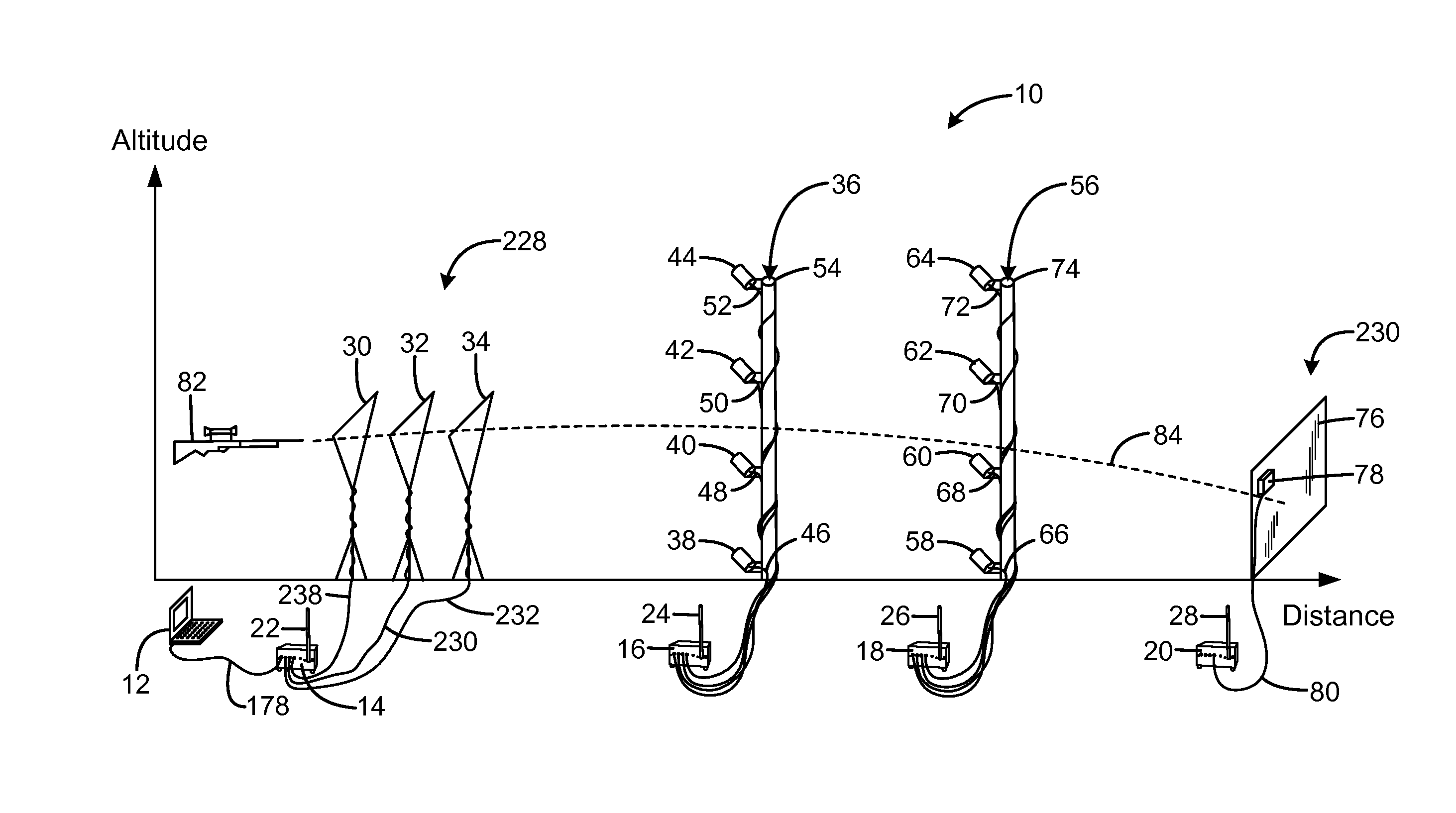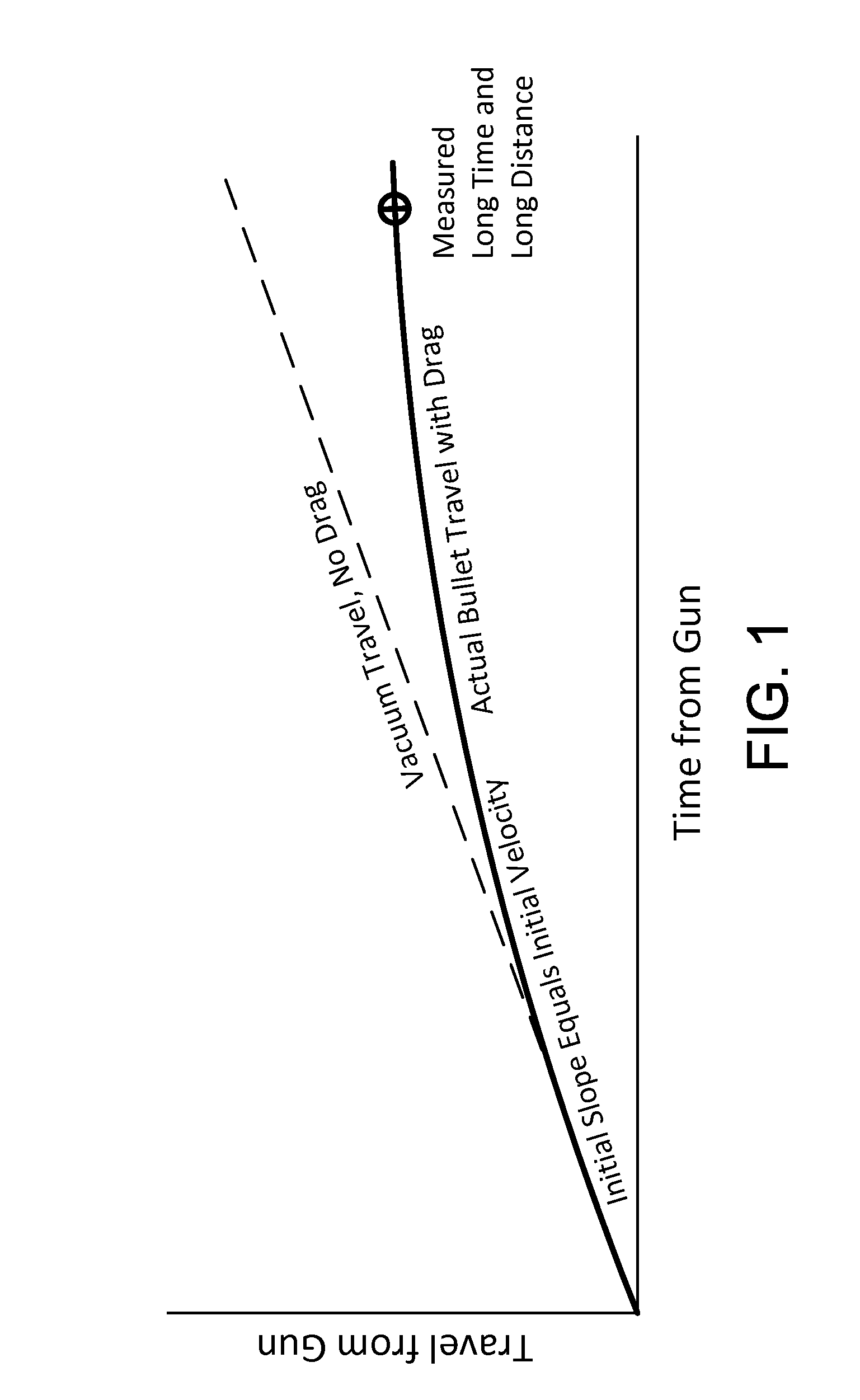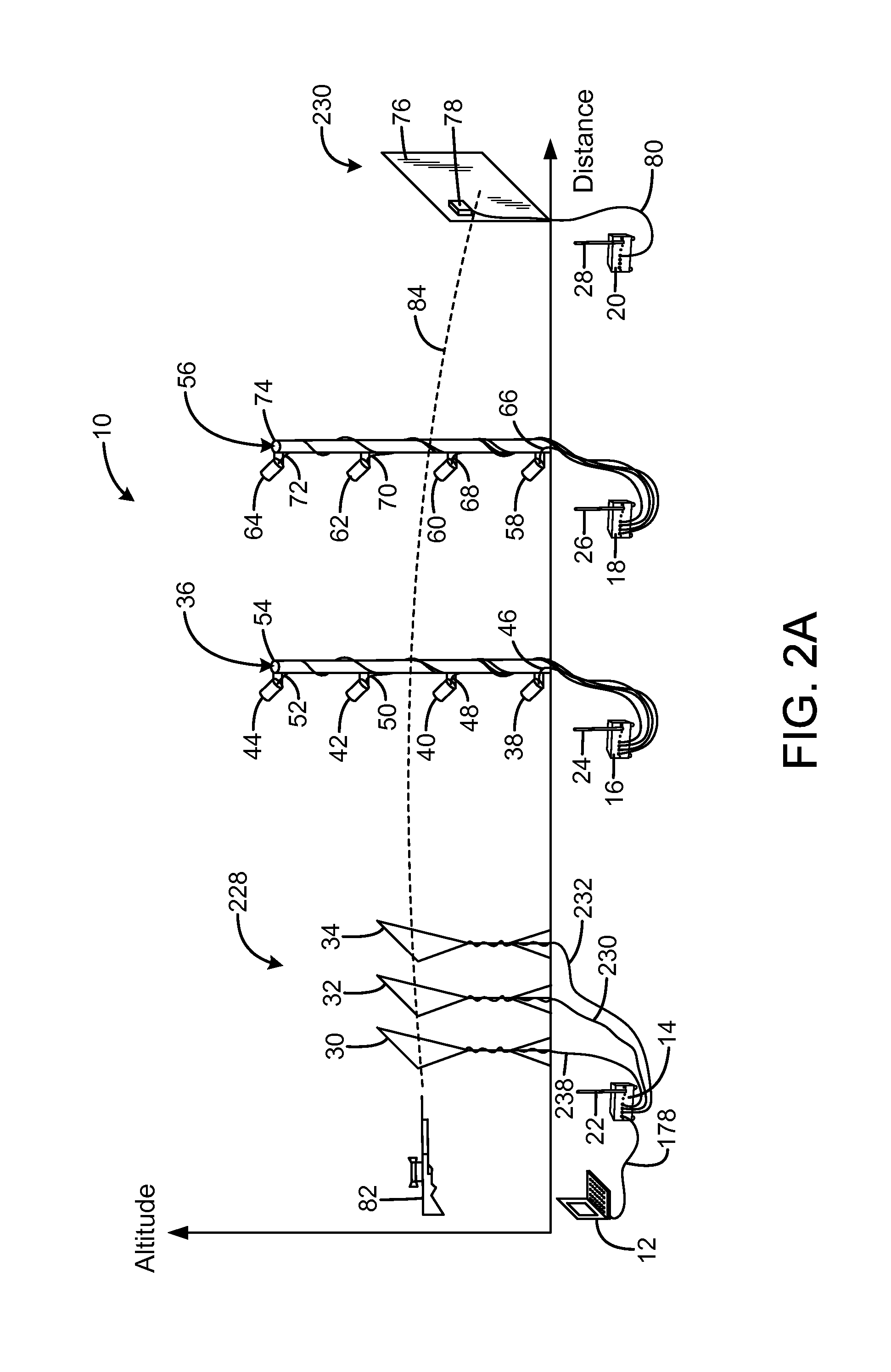System for predicting exterior ballistics
a technology of exterior ballistics and system, applied in the field of firearms, can solve the problems of no formal procedure to ensure agreement between, no computation becomes considerably more complicated, and the cost of doppler systems is high. achieve the effect of longer spacing
- Summary
- Abstract
- Description
- Claims
- Application Information
AI Technical Summary
Benefits of technology
Problems solved by technology
Method used
Image
Examples
Embodiment Construction
[0029]An embodiment of the system for predicting exterior ballistics of the present invention is shown and generally designated by the reference numeral 10.
[0030]FIGS. 2A & 2B illustrate the improved system for predicting exterior ballistics 10 of the present invention. More particularly, the system 10 addresses the three primary sources of bullet path prediction errors. The system measures the initial velocity V0 of the bullet from the gun 82 of interest using the muzzle velocity measurement unit 228. The system allows the assumption of a specific G(v) drag function approximately describing the bullet. Instead of requesting an input of the associated ballistic coefficient C, the system measures the initial velocity and time-of-flight to the known distance, and then computes the value of C required for the assumed G(v) to accurately predict the observed time-of-flight. This value of C can then be used with the assumed G(v) and the traditional predictive equations and procedures to a...
PUM
 Login to View More
Login to View More Abstract
Description
Claims
Application Information
 Login to View More
Login to View More - R&D
- Intellectual Property
- Life Sciences
- Materials
- Tech Scout
- Unparalleled Data Quality
- Higher Quality Content
- 60% Fewer Hallucinations
Browse by: Latest US Patents, China's latest patents, Technical Efficacy Thesaurus, Application Domain, Technology Topic, Popular Technical Reports.
© 2025 PatSnap. All rights reserved.Legal|Privacy policy|Modern Slavery Act Transparency Statement|Sitemap|About US| Contact US: help@patsnap.com



